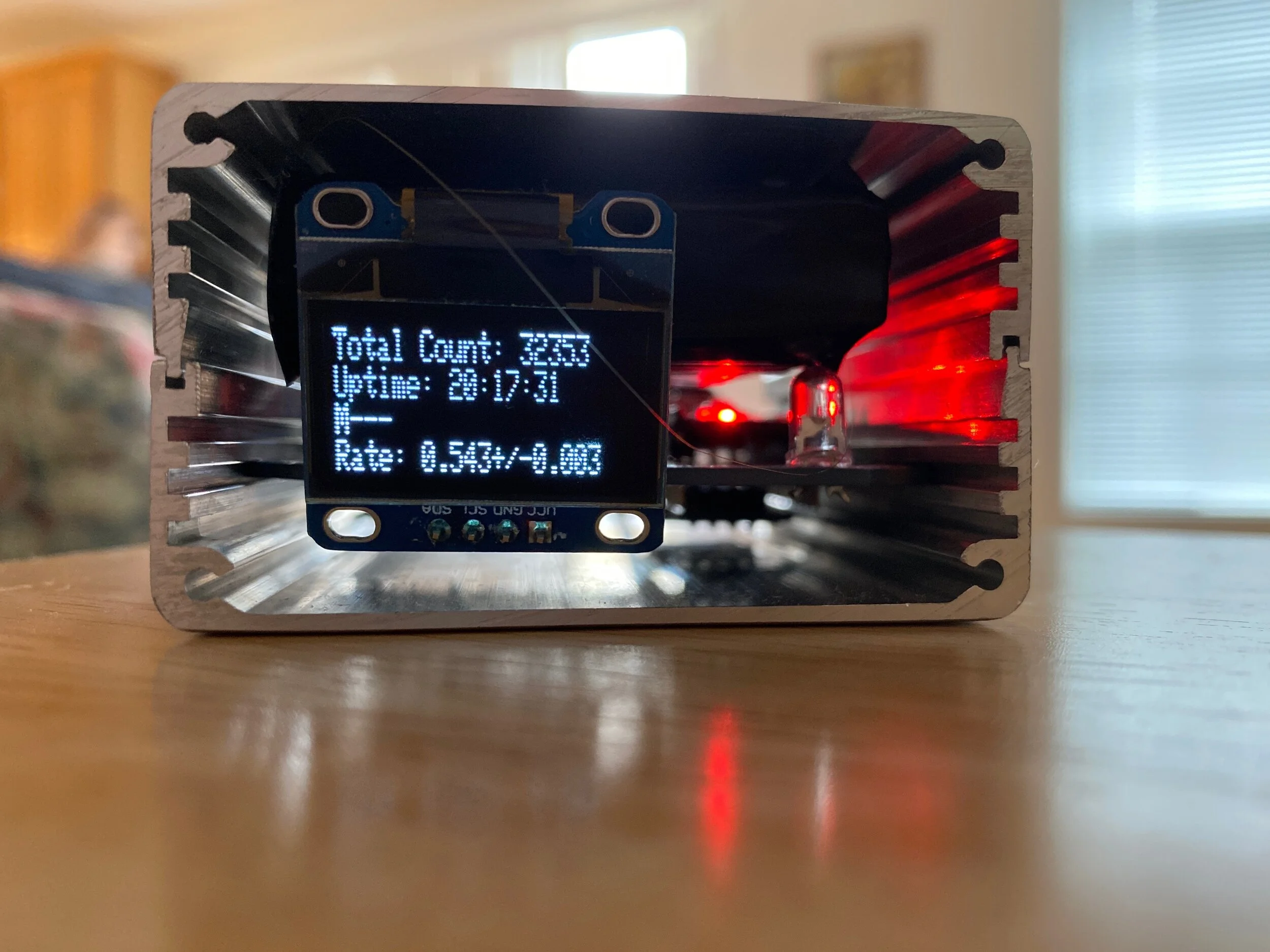The Cosmic Watch Muon Detector project was developed by MIT graduate students, Katarzyna Frankiewicz, and Spencer Axani. Their goal was to create an easy to use tabletop particle detector to detect muon particles. Muon particles are astrophysical particles that come off of cosmic rays. While muons are fairly common and used in many experiments, they’re difficult to detect as their lifespan is only a couple of seconds. This particle detector solves that problem. The muons carry an electric charge of +1 or −1 and have a mass that is about 200 times that of the electron. At rest, the lifetime of the muon is approximately 2.2 microseconds. Given that the muons are produced at more than 10 km above the Earth’s surface, it means there is a very small probability of survival to reach the desktop muon counter. However, because the muons are produced at high energies, relativistic time dilation extends their lifetime. As a result, muons can survive to be detected on Earth. The desktop muon counter is triggering on muons that are produced when high energy astrophysical particles, called cosmic rays, collide with the Earth’s atmosphere producing particles that decay to muons. About 90% of cosmic rays are protons, 9% are helium nuclei, and the remaining 1% are heavier nuclei.
The detector at this point is collecting data on the muons in the atmosphere. We are testing to make sure it isn’t collecting data from other forms of radiation. The rates are consistent regardless of whether a layer of lead is placed over the detector. Ideally, we would test it in a more secure location without other forms of radiation. The rates that we are finding line up correctly with data collected from the MIT group. We collect data that exceeds the hertz of background radiation to filter out photons and other lighter forms of radiation from being detected from our sensory panel.




